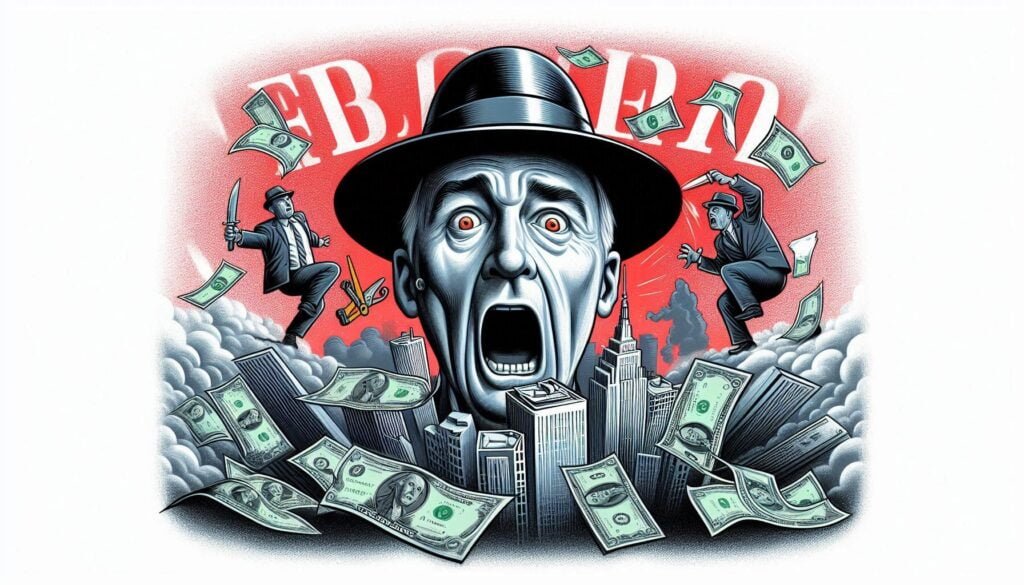
Hey there! Today, let’s dive into something that’s buzzing around the financial world—the Federal Reserve’s recent significant rate cut. Whether you’re a seasoned investor or just starting to understand how the economy works, these changes can impact all of us. So, grab a cup of coffee, and let’s break it down together!
What’s All the Fuss About?
You might be wondering, “What does a rate cut even mean?” Don’t worry; you’re not alone. The Federal Reserve, often just called “the Fed,” manages the country’s monetary policy, and one of the most powerful tools they have is adjusting interest rates. So, when they cut rates, it has a whole ripple effect on our economy.
Think of it like this: imagine your friend just reduced the price of their lemonade stand. More people would want to buy cups, right? Similarly, lower interest rates encourage borrowing and spending. It’s intended to jumpstart economic activity—good news for many!
How Did We Get Here?
To understand why this rate cut happened, we have to look at a few key factors. Here’s a short list to get us started:
- Economic Slowdown: The economy has been showing signs of slowing down.
- Inflation Rates: Inflation has been fluctuating, causing concern.
- Job Market Dynamics: There have been ups and downs in employment figures.
An Economy in Transition
Let’s take a closer look at these factors. For the past few months, it felt like the economy was walking on eggshells. Businesses weren’t quite sure what was going to happen next, and consumer confidence teetered like a seesaw. There were signs that spending was starting to decline, which is never a good sign for growth.
Economic Slowdown
Imagine a car stuck in mud—it just can’t move forward. That’s sort of what we saw with the economy. Growth numbers were less than stellar. Many sectors, from retail to manufacturing, reported lower sales. When businesses feel uncertain, they’re less likely to invest or hire, which can create a domino effect throughout the economy.
Inflation Rates
Inflation, as many of us know, is simply the rate at which prices for goods and services rise. After years of steady inflation, the rates started to climb. It felt like everything was becoming more expensive, from groceries to gas. This led consumers to be cautious and spend less, further slowing down economic growth.
Job Market Dynamics
The job market is a double-edged sword. On one side, we saw unemployment rates reach historic lows. Yay! But on the other side, employers struggled to find workers. So, they raised wages, which sounds great, but it also added pressure to businesses. More expenses could mean less profit, which could lead to layoffs or hiring freezes. And guess what? Fewer jobs can lead to decreased consumer spending.
Why the Rate Cut Matters
Now that we understand the backdrop, let’s explore why this rate cut is such a significant deal. You see, interest rates don’t just affect loans; they impact every aspect of the economy. Here’s why this cut is meaningful:
- Cheaper Borrowing: Lower rates mean it’s less costly to borrow money. Think about your mortgage, car loan, or even a credit card.
- Increased Spending: With lower costs, consumers can spend more freely, which fuels the economy.
- Encouragement for Business Investment: Businesses are more likely to invest in new projects or expand when borrowing is cheaper.
Cheaper Borrowing
Lower interest rates essentially mean that loans are cheaper. Picture yourself on a shopping spree where everything is on sale. With better interest rates, people can afford to buy that new car they’ve been eyeing or even invest in a dream home.
Increased Spending
When consumers feel they have more money in their pockets because borrowing is cheaper, they tend to spend. This spending fuels businesses, which, in turn, can lead to job growth. It’s like a circle—the more we spend, the more businesses thrive, and the more jobs we create!
Encouragement for Business Investment
Businesses also love a good rate cut. Imagine a shiny new toy that you’ve wanted for ages. When the price drops, wouldn’t you rush to the store? Businesses think this way about expansions or new projects. When borrowing costs are low, they’re more willing to take risks that can lead to growth.
What’s Next? The Outlook!
With all this in play, you might be curious—what’s next for the economy? Well, here’s where it gets interesting! The Federal Reserve doesn’t just cut rates for the sake of it. They are watching the economic landscape closely and adjusting their strategies to achieve a balance.
The Role of the Federal Reserve
The Fed’s actions are like a tightrope walk. They aim to support economic growth without letting inflation spiral out of control. Imagine balancing a spoon on your nose while walking on a tightrope. It’s tricky! So while a rate cut may provide a boost, it also raises concerns about inflation returning.
Are We Out of the Woods?
Even with the rate cuts, it’s essential to remember that the economy is unpredictable. Just like a roller coaster ride, there will be ups and downs. Some experts believe that a recovery is on the horizon, while others advise caution. It’s crucial for everyone—from families to investors—to stay informed and adjust accordingly.
How Can You Prepare?
As an individual, you might be wondering how this affects your day-to-day life. Here are some tips that could help you navigate this rate-cut landscape!
- Evaluate Your Debt: With lower rates, it might be a good time to refinance loans or consolidate debt.
- Save Wisely: Even though rates are down, having an emergency fund is crucial.
- Invest Smartly: Consider where your money should go, whether it’s stocks, real estate, or savings accounts.
Evaluate Your Debt
If you’ve got loans with high interest rates, now might be the time to look into refinancing options. Lower monthly payments can free up cash for you to spend or save elsewhere. It’s like getting a discount on something you already own!
Save Wisely
Even when interest rates are low, having savings at hand gives you security. Aim for that emergency fund. You never know when you might face unexpected expenses!
Invest Smartly
If you’re considering investing, a rate cut can mean looking into different avenues—stocks, real estate, or maybe a mix of both. Educate yourself and stay updated with market changes. Investments can be one of the best ways to build your wealth long-term.
The Big Picture
In the grand scheme of things, the Federal Reserve’s decision to cut rates is about more than just numbers. It’s about people, families, and their everyday lives. This rate cut can help make a difference in many ways; it’s about economic vitality, fostering community, and creating opportunities.
If we take a step back and observe the broader landscape, we can find hope. Life isn’t just about economics; it’s about people getting jobs, opening businesses, and building dreams. And while changes in interest rates can stir up a lot of conversations, the real goal is to sustain progress towards a healthier economy.
Wrapping it Up!
So, there you have it! The Federal Reserve’s significant rate cut is a powerful move aimed at jumpstarting our economy. From cheaper borrowing to potential job growth, there’s a lot to unpack. Keep an eye out, stay informed, and consider how these developments might shape your personal finances and future.
Thanks for reading, and I hope this helps demystify the latest buzz around interest rates and the economy. Remember, staying informed is the first step in navigating these changes successfully!
Like what I do? Do you want to help support?
Or if you are looking to setup a website checkout Hostinger and have them build it for you with AI tools that take the hassle out of it. Also Act Fast for hosting as low as $2.99/mo!

You can also checkout a couple of my books

- Or any of my books here is a comprehensive List of my Books on Amazon
